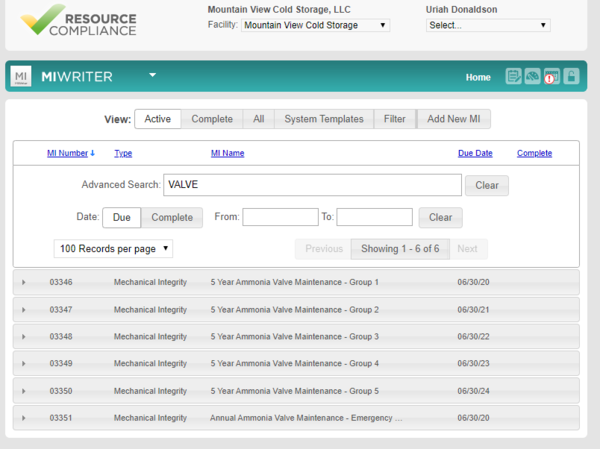Valve Exercising and IIAR 6

Ammonia refrigeration systems are typically configured with hundreds of valves that require maintenance to help ensure that they will function properly when adjusted from their normal position. ANSI/IIAR 6-2019 Standard for Inspection, Testing, and Maintenance of Closed-Circuit Ammonia Refrigeration Systems includes the minimum requirements for valve inspection, testing, and maintenance (ITM) in Table 11.1.6. Concerning valve exercising, Table 11.1.6 requires that shut-off valves be exercised and lubricated annually if the valve is designated an “emergency shut-off valve”, or every five (5) years if the valve is a “non-emergency shut-off valve”.
Neither IIAR 1 nor IIAR 6 define what an emergency shut-off valve is, so it is the prerogative of each facility to define which valves are designated for emergencies. At minimum, the King Valve (main HPL isolation valve), main hot gas defrost isolation valve, and main pumped liquid isolation valve should be considered emergency shut-off valves. The SOPs may specify other valves that also fit in this category.
While it is recommended that valve exercising be performed according to each valve manufacturer’s recommended procedure, we have included a general procedure for exercising shut-off valves below:
- Clean the stem with a soft rag and refrigerant oil. Coat the valve stem with refrigeration oil;
- Verify the tightness of the packing nut and exercise the valve;
- Normally-open valves should be moved off the fully open position;
- Care must be exercised in operating valves not in regular use. Defective seals can leak unexpectedly. Wearing PPE will help protect against a sudden exposure to ammonia gas or liquid;
- Inspect hand wheels, flange bolts, and valve bonnet bolts. Take special caution with the smaller bonnet bolts as rust can build up between the valve body and bonnet leading to the bolts breaking as the rust builds up over time;
- Clean the vent holes when servicing seal cap covers;
- Seal caps can seize to the stem and bonnet assembly of a valve. Use great caution when removing a seal cap from valve to ensure that the bonnet is not coming undone under the insulation. Applying refrigeration oil to the threads before screwing the cover onto the valve stem will prevent the galling that leads to seized threads.
Developing an organized system to schedule, track, and document valve maintenance can be challenging due to the multitude of valves installed in each system. While there is no single method for developing such a system, consideration should be given to dividing the valves into groups so that each task is less daunting. One method for splitting up valve groups would be to split all “non-emergency shut off valves” into five (5) groups. If ITM is performed on the valves in one of these groups each year, it would satisfy the five-year requirement. As with all maintenance activities, a CMMS can be useful for tracking ITM tasks that repeat on a predetermined frequency.


Leave a Reply